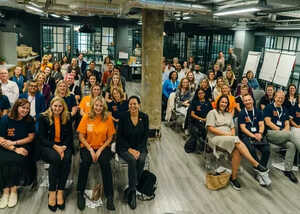While the internet has had a seismically beneficial impact on the education system and the lives of children and young adults—improving the learning-teaching experience with a wealth of resources and a framework with unimaginable accessibility—there exists a responsibility for parents, educators, and digital service providers to make sure that a child’s engagement in the online world is positive and, above all, safe.
While Computeam are leading the way when it comes to providing internet safeguarding solutions for schools, with our cloud-based Securly platform, in too many cases, services are not designed specifically for children or modified for their developing minds. This can result in a digital environment that, although enjoyed by children and young adults, is bewildering and perilous.
A safer online
experience
The Digital Childhood Paper, written and created by Baroness Beeban Kidron, Founder of 5Rights and Dr. Angharad Rudkin from the University of Southampton—along with a host of expert contributors from the education sector—is a valuable resource which aims to set out guidelines for schools and parents to help safeguard and navigate the potential risks and challenges a young user my face in the online environment.
One of the key messages from the study is the conviction that making the internet an adult-exclusive space is not an option, such is the wealth of benefits of educational opportunities available. Children simply must have access to the unlimited well of information and knowledge for the benefit of their education and growth. As well as the responsibility of adults and educators to ensure that children are protected, the impetus also lies with digital service providers to provide the skills and software to safely navigate the internet and make the right choices when embroiled in the online landscape.

Children of all ages
Digging a little deeper, the paper carefully targets each child age group and identifies the pitfalls and dangers they might encounter, the short and long-term impacts—then sets out clear recommendations to help negotiate these challenges. In the 3-5 Years age range, for example, in which both children and adults are unaware of the full range of risks, such as information sharing, digital footprint or formation of digital habits, the risks are complex. The paper gives actionable advice that parents, educators, and digital service providers must implement to create a safer environment, such as strict adult-guided technology use, screen guidelines, and the development of trusted, reviewed platforms.
Fast-forward to the 13-15 age bracket, where children are experiencing significant neuropsychological changes, the challenges differ but remain equally nuanced. While a child may have developed mentally, they may still lack the critical thinking required to identify the veracity of the information they encounter, while also having the agency to access more adult-themed content. The onus here focuses on the parents and educators to invest in honest, open dialogue with the age group—being mindful that this is a key stage of development, but also outlining the active risks.
How can we help?
Here at Computeam, we believe that to tackle the ongoing challenges of internet safety for children, it requires a targeted, multifaceted approach from all parties. From teachers, governors and parents, to digital service and ICT providers. Our combined efforts and resources must be targeted towards developing a secure online experience for children of all ages.
We have years of experience and expertise in safeguarding networks and devices for use in schools, utilizing cutting-edge software, technology and training services. Computeam will always find the right ICT solution for your education needs. If you’d like any help or advice on this integral issue, please don’t hesitate to get in touch.
Get in touch






 Learning Locker
Learning Locker Climate project
Climate project